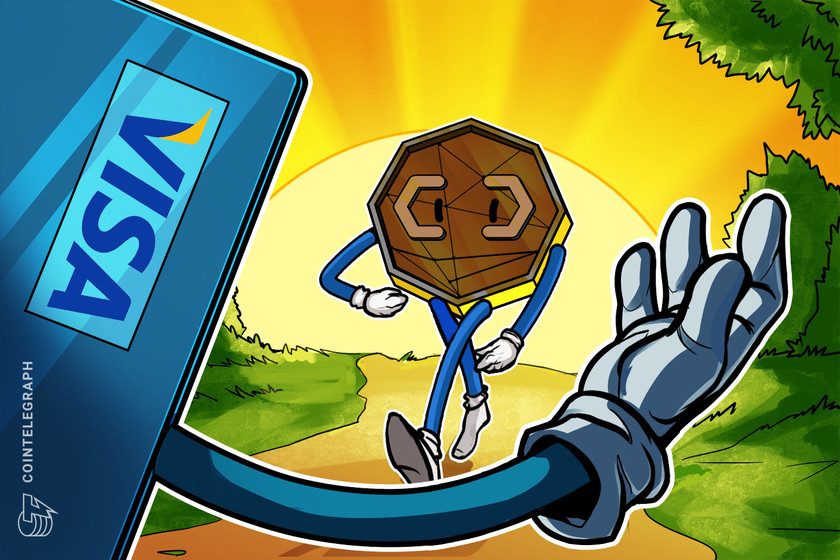Where and how to sell Pi Coin: A step-by-step guide
Key takeaways
-
Set up your Pi Wallet and secure it with a 24-word seed phrase before transferring your coins.
-
KYC is often required on both CEXs and P2P platforms to transfer and sell Pi Coins.
-
You can sell Pi through CEXs or P2P platforms, each offering different security, speed and control.
-
Always do your own research (DYOR) before selling or holding, as expert opinions on Pi’s future vary.
If you’re here, you probably already know what Pi Coin is and just want to figure out how to sell it. However, a recap awaits, in case you need one.
While the project pitches itself as a way to democratize crypto access through mobile mining, there are some major concerns that have been hard to ignore:
-
Pi claims over 60 million users, but blockchain explorers show only about 9.11 million wallets, with daily active users closer to 20,000.
-
Six years after launch, the Pi mainnet is still technically “enclosed,” with full control held by the core team.
-
Inflation is a major issue: The circulating supply doubled in just a year, sitting at around 5.56 billion tokens as of early 2025.
-
The mandatory Know Your Customer (KYC) process raises serious privacy concerns, especially with user data being handled by regional validators.
-
Heavy reliance on in-app advertising, despite low operating costs, and tactics designed to keep users engaged without clear utility.
Now let’s talk price
Pi Coin reached an all-time high of about $2.98 in late February 2024 when early trading started appearing on selected exchanges. Since then, it’s been almost a straight downward slide.
As of April 28, 2025, Pi Coin (PI) is trading around $0.62, which means it has fallen by roughly 79% from its peak. Even worse, it’s not showing signs of recovery; the price is hovering dangerously close to its all-time low, with thin liquidity and decreasing volume across most exchanges.
So, with mounting concerns about the project’s future and the market showing little faith, many early miners and holders are deciding it might be time to abandon ship.
Here’s exactly how you can do that — step-by-step.
Did you know? The Pi Ad Network, launched in 2024, allows developers to monetize their apps by displaying ads within the Pi ecosystem. Advertisers pay in Pi, creating a circular economy where developers earn Pi for user engagement, and users benefit from relevant advertisements.
Setting up your Pi Wallet
Once you’ve decided to sell your Pi Coin, the first step is getting your coins into a wallet you control, and for that, you’ll need to set up a wallet. Here’s how to get started.
First, download the Pi Browser app — it’s available on both the Google Play Store and the App Store. Once it’s installed, open it up and head to the “wallet.pi” page inside the browser.
There, you’ll be guided through setting up your Pi Wallet. It’s a quick process, but don’t rush it. When you create your wallet, you’ll be given a 24-word seed phrase. This is critical: The Pi Network doesn’t store your passphrase for you. If you lose it, you lose access to your wallet and your Pi for good. So write it down, store it offline, and keep it somewhere safe.
If you get stuck or want a walkthrough, the Pi Network’s official support portal has detailed instructions.
Transferring your Pi Coins to your wallet
Setting up the wallet is only half the job. To actually move your Pi Coins over, you’ll first need to complete KYC verification.
Open your Pi Network app, go to the KYC section, and follow the prompts to verify your identity. Once your KYC is approved, you’ll unlock the ability to transfer your mined coins.
From there, head to the Mainnet Checklist in the app, which will walk you through the final steps. Once everything’s checked off, your transferable balance will be sent straight to your Pi Wallet.
Heads up: The transfer isn’t always instant. Sometimes, there are delays, especially if the network is busy, so don’t panic if it takes a little time. Just make sure your app is updated and that you’ve finished all the required steps.
Once that’s done, you’re finally ready to move on to selling.
Did you know? Even though Pi Network transitioned to its open mainnet in February 2025, users are still required to use the official Pi Wallet for withdrawals, with the network citing security and KYC requirements.
Choosing where to sell your Pi Coin
Now that your Pi Coins are in your wallet, you have two main options for selling them: centralized exchanges (CEXs) or peer-to-peer (P2P) platforms. Each has its own pros and cons, depending on how much security, speed and control you want.
Selling Pi on centralized exchanges (CEXs)
If you want the most straightforward experience, CEXs are the way to go. These platforms offer a structured environment where trades happen quickly — and there’s usually more buyer demand, too.
As of April 2025, here are a few CEXs where you can sell your Pi Coin:
-
OKX: Supports multiple trading pairs (such as PI/USDT, PI/TRY, PI/USD, PI/EUR and PI/BRL). Fees are fairly low (0.08% for makers and 0.10% for takers) and withdrawal fees vary depending on what you’re moving out.
-
MEXC: Offers pairs like PI/USDT, PI/USDC and PI/EUR. The nice thing here? 0% maker fees and 0.05% taker fees, making it a cost-effective option.
-
Gate.io: Lists the PI/USDT pair. Trading fees are 0.1% across the board. Just be aware that Gate.io requires full KYC verification before you can start.
-
Bitget: Also offers PI/USDT trading, with 0.1% fees. However, Bitget isn’t available in certain countries (including the US), so check if you have access before signing up.
Things to keep in mind when picking a CEX:
-
KYC is usually required — expect to submit ID documents.
-
Trading pairs matter — if you want USDT, make sure the exchange offers it.
-
Fees vary, so compare platforms if you’re selling a big chunk.
-
Liquidity counts — the more active the market, the better the prices you’ll get.
Step-by-step guide to selling Pi Coin on centralized exchanges
First, you’ll need to create an account on a crypto exchange that supports Pi trading. Sign up just like you would for any online service. After that, you’ll be asked to go through KYC verification by uploading ID documents and sometimes even a short selfie video to prove you’re real. It’s a bit of a hassle, but without it, you won’t be able to trade.
Once your account is set up and verified, it’s time to deposit your Pi Coins. Log in to your new exchange account, head to the “Deposit” section, and choose “Pi Coin” from the list. You’ll get a special wallet address — copy that address carefully. Then open your Pi Wallet, paste the deposit address, and send your coins over. Transfers can take a little time depending on network traffic, so don’t stress if it’s not instant.
When your Pi Coins show up in your exchange balance, you’re ready to sell. Go to the trading area and find the right trading pair; for most people, it’ll be PI/USDT (selling Pi for Tether, a popular stablecoin).
You can either sell at the market price if you want it done fast or set a “limit order” if you’re willing to wait for a better price.
Finally, once your Pi is sold, you’ll have USDt (USDT) (or whichever currency you chose) sitting in your account. From there, you can withdraw your funds — either converting it into fiat like the US dollar or euro and sending it to your bank or transferring your crypto to another wallet.
Selling Pi P2P
If you prefer dealing directly with another person, you can also sell your Pi Coin through P2P platforms. These give you more flexibility, but they do come with more risk.
Some options include:
-
Coinskro: A P2P platform built specifically for Pi transactions, accessible through the Pi Browser.
-
Telegram and Discord communities: Some Pi trading communities are pretty active, but you’ll need to vet who you’re dealing with carefully.
Tips for staying safe in P2P sales:
-
Always use escrow services (Coinskro offers this) to hold funds until both sides confirm.
-
Verify the person you’re trading with — check their history if you can.
-
Never overshare personal or banking information.
-
If it’s your first time trading with someone, start with a small amount to test trustworthiness.
Did you know? In 2022, peer-to-peer (P2P) payment fraud losses in the United States reached an estimated $1.7 billion, marking a 90% increase over the previous year.
Step-by-step guide to selling Pi Coin P2P
Once you’ve picked a platform, you’ll usually create an account, and depending on the service, you might have to verify your identity, too. From there, you’ve got two options: 1) You can either list your Pi Coins for sale (saying how much you’re offering and at what price) or 2) if you want to move faster, browse existing buy offers.
If you see someone already looking to buy Pi for USDT (or another currency you want), you can simply respond to their ad instead of setting up your own. This can be a quicker way to get a deal done without having to wait for a buyer to come to you.
When you find a match and agree to the terms, always use an escrow service whenever possible. Escrow will hold the buyer’s payment safely while you transfer the Pi Coins, adding a critical layer of protection for both sides.
Here’s how a typical P2P deal works:
-
The buyer sends their payment to the escrow system → you transfer your Pi Coins to their provided wallet address → once they confirm they’ve received the coins, the escrow releases the money to you.
It’s smooth and low-stress as long as you stick to the platform’s rules.
If you’re considering going outside of an escrow system — say, because someone offers you a “better deal” — be extremely cautious. Always use secure, traceable payment methods, never overshare personal or financial info, and if it’s your first time dealing with someone, start with a small amount to test trustworthiness before committing to a bigger sale.
Should you sell or hold your Pi Coin?
If you’ve made it this far, you’re probably still weighing the big question: Should you sell your Pi Coin now or hang on a little longer?
This article has covered a lot of the red flags — from the sluggish mainnet rollout to inflation concerns and privacy issues — but it’s only fair to point out that the future isn’t written in stone. There are still some experts out there who see a path for Pi Network to grow.
For example, analysts at CoinCodex predict Pi Coin could average around $1.71 in 2025, with highs potentially reaching up to $2.94. Over at CoinDCX, its forecast puts Pi trading between $2.75 and $2.80 by the end of the year, assuming everything breaks in Pi’s favor: a full mainnet launch (because it operates with a “firewall” that restricts external connectivity), growing adoption and better overall market conditions.
Of course, these are just predictions — not guarantees. And if you’ve spent any time in crypto, you already know that things can swing wildly in either direction.
That’s why the golden rule applies here: do your own research (DYOR). Expert opinions can be helpful, but they aren’t a substitute for doing your own homework. Double-check sources, stay skeptical, and always think about your own financial goals and risk tolerance before making a move.
Regardless of whether you decide to sell your Pi now or ride it out and see what the future holds, make sure it’s a choice you’re comfortable with (and one that fits your bigger financial picture).
This article does not contain investment advice or recommendations. Every investment and trading move involves risk, and readers should conduct their own research when making a decision.







